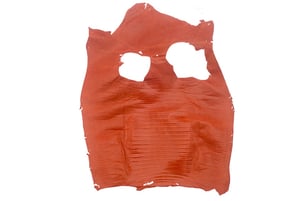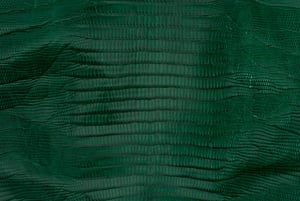 Lizard skins don’t get nearly enough love from the average fashion designer. Sure, crocodile and alligator leather are widely recognized as top-tier fashion materials, and python skins are an ever-popular choice, but you don’t often hear much about major fashion projects using lizard skin.
Lizard skins don’t get nearly enough love from the average fashion designer. Sure, crocodile and alligator leather are widely recognized as top-tier fashion materials, and python skins are an ever-popular choice, but you don’t often hear much about major fashion projects using lizard skin.
Yet, despite not being as loudly touted as other exotic reptilian skins, lizard skin is an incredibly useful and versatile exotic material that can be used for boots, bags, belts, and many other exotic leather projects.
Why would you use lizard skin in your next exotic leather project? Here are a few reasons:
#1: Variety
One of the reasons that we use the term lizard skin is that there are actually a few different species of lizard that fall under this skin category.
For example, there are three kinds of lizard skin that Pan American Leathers frequently offers:
- Teju lizard, or Tupinambis Merianae. This lizard comes from the Southern portions of South Africa. The scales of the Teju lizard are small and almost square-shaped, with larger rectangular scales along the belly. Like a python, the Teju’s skin has irregular color patterns that vary by subspecies.
- Ring lizard, or Varanus Salvator. Hailing from Indonesia, the ring lizard’s skin has a series of small round color patterns in its scales, hence the name. Like the Teju lizard, the ring lizard’s scales are small and square-like, with larger, more rectangular, scales along the belly.
- Nile Lizard, or Varanus Niloticus. Mostly found in Sudan, the Nile lizard has smaller scales than the ring and Teju lizards. The belly scales on these hides are still larger and more rectangular than the back scales.
While these hides all have similarities such as in the size of their scales and the overall size of the hide, the individual colors vary and the shapes of the scales can be subtly different. This gives you a little more variety when ordering lizard skins than you might have originally expected.
2: Size
When you hear the word “lizard,” your first thought might be of any number of tiny reptiles that can fit in the palm of your hand, far too small to be a viable exotic leather. However, the three lizard species that are typically used for exotic leather are much bigger than that.
The ring, Nile, and Teju lizards all grow to anywhere between 1 and 3 square feet in size, making them large enough to fit most exotic leather panels. Whether you need to make wallets, boots, or handbags, there are lizard skins in the sizes you need to get the job done.
3: Easy to Work With
 Lizard skins tend to be between 0.4 to 0.6 mm thick, thinner than most other exotics. Also, these hides have no calcium content in them making them softer than crocodiles and stingray. This makes lizard hide very easy to work with compared to bonier reptile hides.
Lizard skins tend to be between 0.4 to 0.6 mm thick, thinner than most other exotics. Also, these hides have no calcium content in them making them softer than crocodiles and stingray. This makes lizard hide very easy to work with compared to bonier reptile hides.
The thinner hide and lack of calcium deposits make lizard skin flexible and easy to reshape or cut, meaning less drama with the dremel and other heavy-duty tools to prep the skin for sewing.
Another benefit of a low calcium content in lizard scales is that it’s very easy to bleach and dye evenly. With lizard hide, if you want a uniform color, you’ll get a uniform color.
The ease of working with lizard leather helps save you time and effort when you’re making your next exotic leather project.
These are just a few of the reasons why you should use exotic lizard skins in your next fashion project. Check out the lizard skin page of the store to see more!



